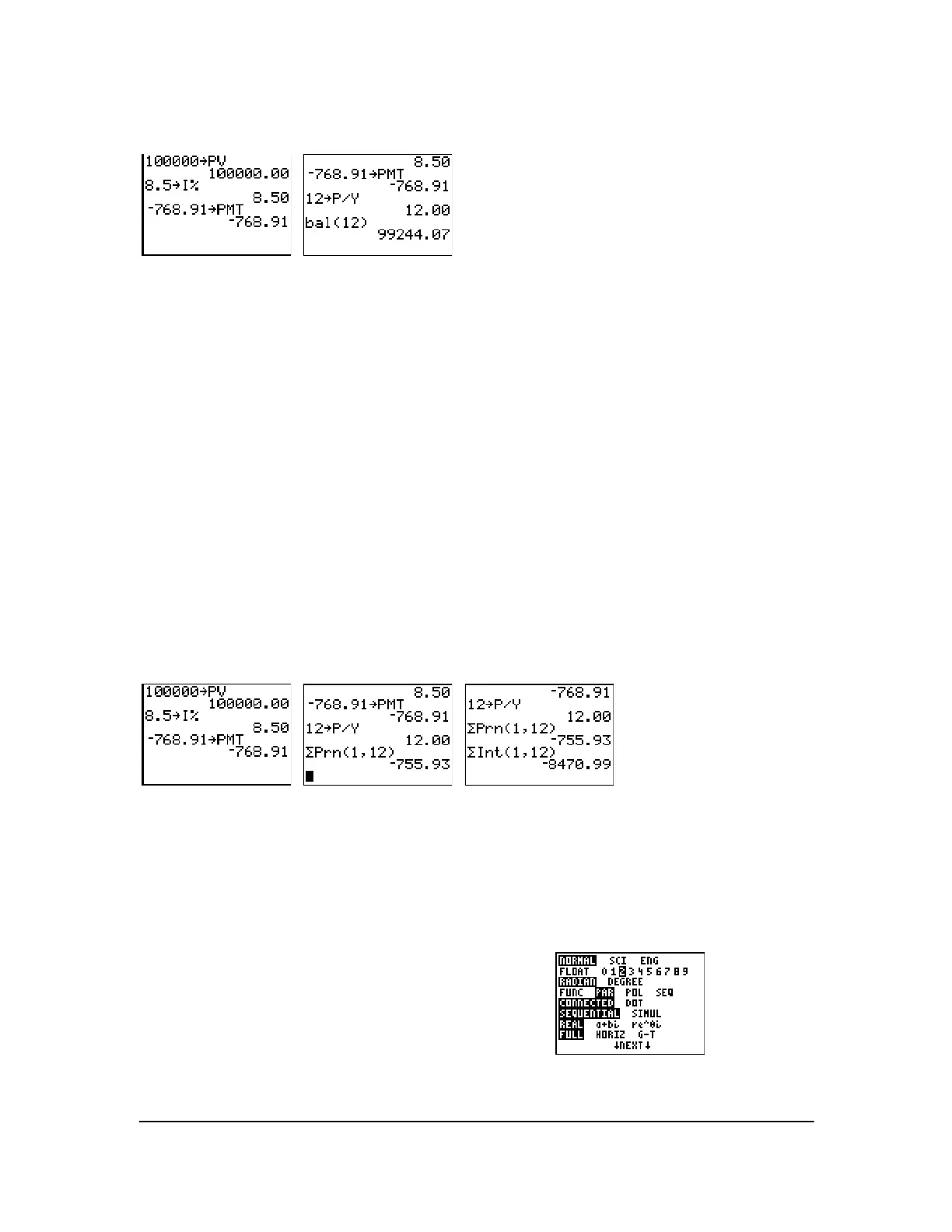Chapter 14: Applications 259
bal(npmt[,roundvalue])
GPrn(, GInt(
GPrn( computes the sum of the principal during a specified period for an amortization schedule using
stored values for ¾æ,
PV, and PMT. pmt1 is the starting payment. pmt2 is the ending payment in the
range.
pmt1 and pmt2 must be positive integers < 10,000. roundvalue specifies the internal precision
the calculator uses to calculate the principal; if you do not specify
roundvalue, the TI-84 Plus uses the
current
Float/Fix decimal-mode setting.
Note: You must enter values for æ, PV, PMT, and before computing the principal.
GPrn(pmt1,pmt2[,roundvalue])
GInt( computes the sum of the interest during a specified period for an amortization schedule using
stored values for ¾æ,
PV, and PMT. pmt1 is the starting payment. pmt2 is the ending payment in the
range.
pmt1 and pmt2 must be positive integers < 10,000. roundvalue specifies the internal precision
the calculator uses to calculate the interest; if you do not specify
roundvalue, the TI-84 Plus uses the
current
Float/Fix decimal-mode setting.
G
Int(pmt1,pmt2[,roundvalue])
Amortization Example: Calculating an Outstanding Loan Balance
You want to buy a home with a 30-year mortgage at 8 percent APR. Monthly payments are 800.
Calculate the outstanding loan balance after each payment and display the results in a graph and
in the table.
1. Press z. Press † ~ ~ ~ Í to set the
fixed-decimal mode setting to
2. Press † † ~ Í to
select
Par graphing mode.
2. Press Œ Í Í to display the TVM Solver.

